This photo taken on Oct. 21, 2025 shows the comet C/2025 A6 (Lemmon) in the sky over Tangyuan County, northeast China’s Heilongjiang Province. (Photo by Zhu Zongqiang/Xinhua)
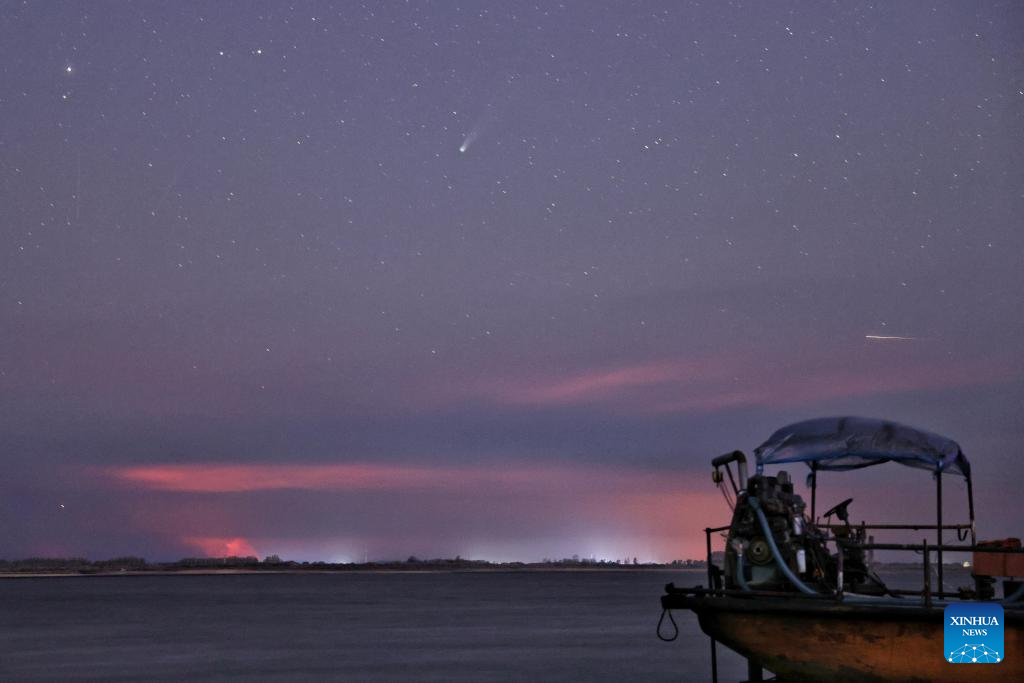
This photo taken on Oct. 20, 2025 shows the comet C/2025 A6 (Lemmon) and…
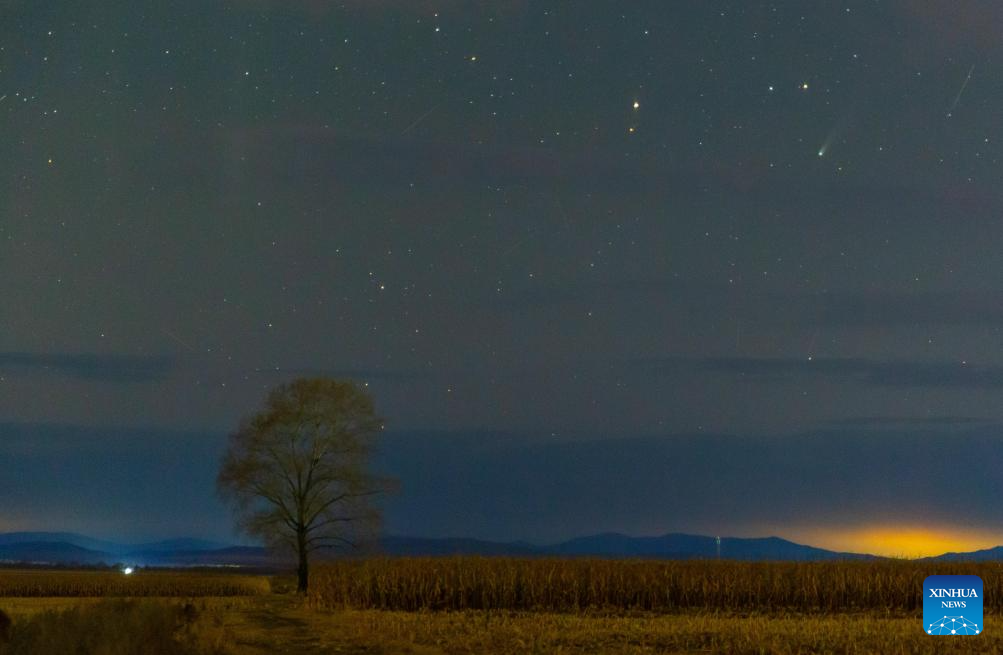
This photo taken on Oct. 21, 2025 shows the comet C/2025 A6 (Lemmon) in the sky over Tangyuan County, northeast China’s Heilongjiang Province. (Photo by Zhu Zongqiang/Xinhua)

This photo taken on Oct. 20, 2025 shows the comet C/2025 A6 (Lemmon) and…

The researchers used National Inpatient Samples from 2016 to 2020, identifying the hospitalizations involving diagnoses of MASLD, the disease formerly known as nonalcoholic fatty liver disease, and MASH, then compared these groups to patients…
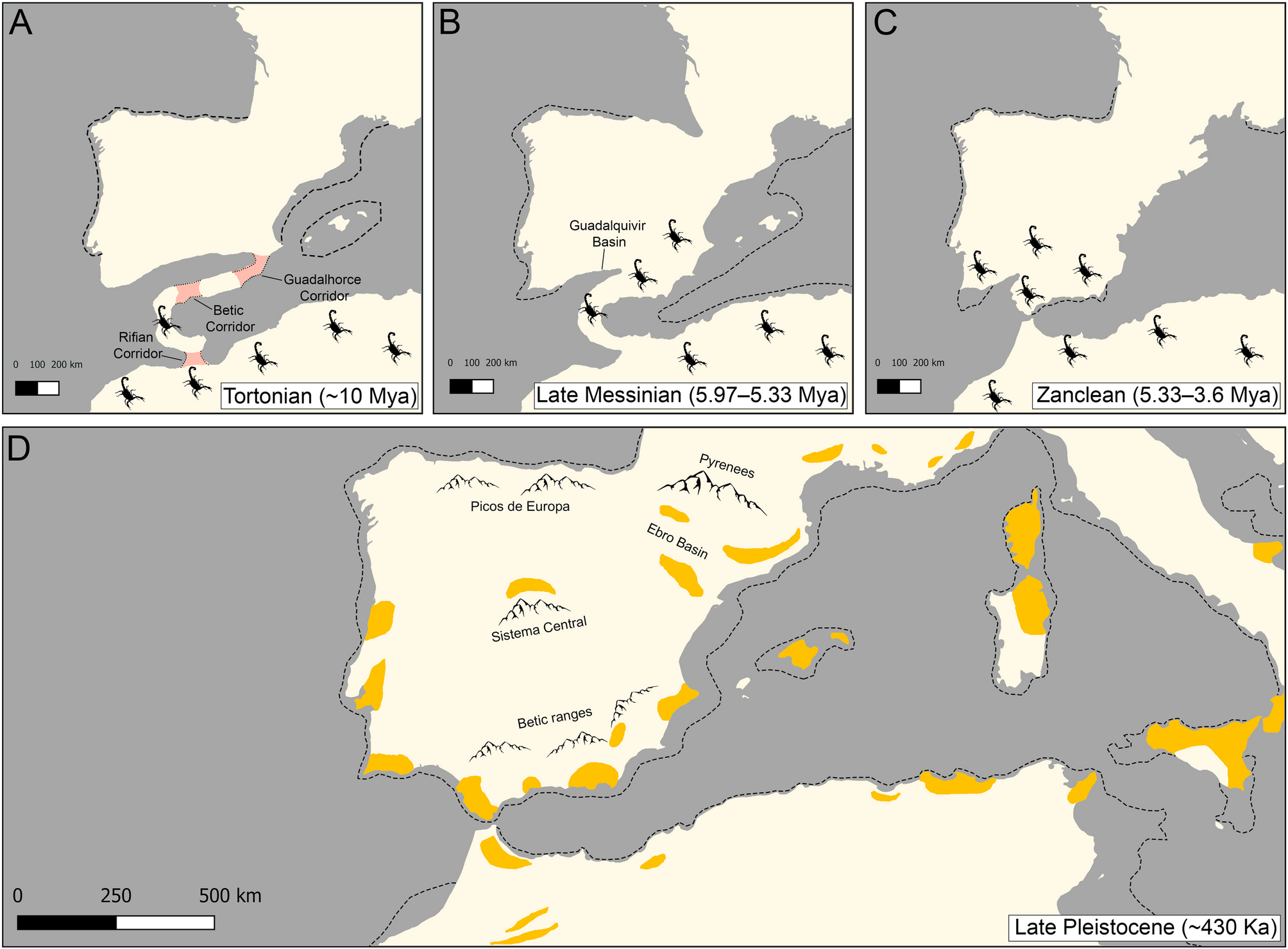
Toews DPL, Brelsford A. The biogeography of mitochondrial and nuclear discordance in animals. Mol Ecol. 2012;21:3907–30. https://doi.org/10.1111/j.1365-294X.2012.05664.x.
Google Scholar
Després L. One, two or more species? Mitonuclear discordance and species delimitation. Mol Ecol. 2019;28:3845–7. https://doi.org/10.1111/mec.15211.
Google Scholar
Wüster W, Kaiser H, Hoogmoed MS, Ceríaco LMP, Dirksen L, Dufresnes C, et al. How not to describe a species: lessons from a tangle of anacondas (Boidae: Eunectes Wagler, 1830). Zool J Linn Soc. 2024;201:zlae099. https://doi.org/10.1093/zoolinnean/zlae099.
Google Scholar
Funk DJ, Omland KE. Species-level paraphyly and polyphyly: frequency, causes, and consequences, with insights from animal mitochondrial DNA. Annu Rev Ecol Evol Syst. 2003;34:397–423. https://doi.org/10.1146/annurev.ecolsys.34.011802.132421.
Google Scholar
Ballard JWO, Whitlock MC. The incomplete natural history of mitochondria. Mol Ecol. 2004;13:729–44. https://doi.org/10.1046/j.1365-294X.2003.02063.x.
Google Scholar
Hurst GD, Jiggins FM. Problems with mitochondrial DNA as a marker in population, phylogeographic and phylogenetic studies: the effects of inherited symbionts. Proc R Soc Lond B Biol Sci. 2005;272:1525–34. https://doi.org/10.1098/rspb.2005.3056.
Google Scholar
Edwards SV, Potter S, Schmitt CJ, Bragg JG, Moritz C. Reticulation, divergence, and the phylogeography–phylogenetics continuum. Proc Natl Acad Sci U S A. 2016;113:8025–32. https://doi.org/10.1073/pnas.1601066113.
Google Scholar
Andújar C, Arribas P, Ruiz C, Serrano J, Gómez-Zurita J. Integration of conflict into integrative taxonomy: fitting hybridization in species delimitation of Mesocarabus (Coleoptera: Carabidae). Mol Ecol. 2014;23:4344–61. https://doi.org/10.1111/mec.12793.
Google Scholar
Firneno TJ, O’Neill JR, Itgen MW, Kihneman TA, Townsend JH, Fujita MK. Delimitation despite discordance: evaluating the species limits of a confounding species complex in the face of mitonuclear discordance. Ecol Evol. 2021;11:12739–53. https://doi.org/10.1002/ece3.8018.
Google Scholar
Abalde S, Crocetta F, Tenorio MJ, D’Aniello S, Fassio G, Rodríguez-Flores PC, Uribe JE, Afonso CML, Oliverio M, Zardoya R. Hidden species diversity and mito-nuclear discordance within the mediterranean cone snail, Lautoconus ventricosus. Mol Phylogenet Evol. 2023;186:107838. https://doi.org/10.1016/j.ympev.2023.107838.
Google Scholar
Duran DP, Laroche RA, Roman SJ, Godwin W, Herrmann DP, Bull E, et al. Species delimitation, discovery and conservation in a tiger beetle species complex despite discordant genetic data. Sci Rep. 2024;14:6617. https://doi.org/10.1038/s41598-024-56875-9.
Google Scholar
Carstens BC, Pelletier TA, Reid NM, Satler JD. How to fail at species delimitation. Mol Ecol. 2013;22:4369–83. https://doi.org/10.1111/mec.12413.
Google Scholar
Quattrini AM, Wu T, Soong K, Jeng M-S, Benayahu Y, McFadden CS. A next generation approach to species delimitation reveals the role of hybridization in a cryptic species complex of corals. BMC Evol Biol. 2019;19:116. https://doi.org/10.1186/s12862-019-1427-y.
Google Scholar
Dowling TE, Secor CL. The role of hybridization and introgression in the diversification of animals. Annu Rev Ecol Syst. 1997;28:593–619. https://doi.org/10.1146/annurev.ecolsys.28.1.593.
Google Scholar
Tovar-Sánchez E, Oyama K. Natural hybridization and hybrid zones between Quercus crassifolia and Quercus crassipes (Fagaceae) in Mexico: morphological and molecular evidence. Am J Bot. 2004;91:1352–63. https://doi.org/10.3732/ajb.91.9.1352.
Google Scholar
Renaud S, Alibert P, Auffray J-C. Modularity as a source of new morphological variation in the mandible of hybrid mice. BMC Evol Biol. 2012;12:141. https://doi.org/10.1186/1471-2148-12-141.
Google Scholar
Harvati K, Ackermann RR. Merging morphological and genetic evidence to assess hybridization in western Eurasian Late Pleistocene hominins. Nat Ecol Evol. 2022;6:1573–85. https://doi.org/10.1038/s41559-022-01875-z.
Google Scholar
Freitas I, Velo-Antón G, Kaliontzopoulou A, Zuazo Ó, Martínez-Freiría F. Association between genetic admixture and morphological patterns in a hybrid zone between the two Iberian vipers, Vipera aspis and V. latastei. J Zool Syst Evol Res. 2024;2024(3800363). https://doi.org/10.1155/2024/3800363.
Hewitt GM. Some genetic consequences of ice ages, and their role in divergence and speciation. Biol J Linn Soc. 1996;58:247–76. https://doi.org/10.1006/bijl.1996.0035.
Google Scholar
Hewitt G. The genetic legacy of the Quaternary ice ages. Nature. 2000;405:907–13. https://doi.org/10.1038/35016000.
Google Scholar
García-París M, Alcobendas M, Buckley D, Wake DB. Dispersal of viviparity across contact zones in Iberian populations of fire salamanders (Salamandra) inferred from discordance of genetic and morphological traits. Evolution. 2003;57:129–43. https://doi.org/10.1111/j.0014-3820.2003.tb00221.x.
Google Scholar
Schmitt T. Molecular biogeography of Europe: Pleistocene cycles and postglacial trends. Front Zool. 2007;4. https://doi.org/10.1186/1742-9994-4-11.
Bisconti R, Porretta D, Arduino P, Nascetti G, Canestrelli D. Hybridization and extensive mitochondrial introgression among fire salamanders in peninsular Italy. Sci Rep. 2018;8:13187. https://doi.org/10.1038/s41598-018-31535-x.
Dufresnes C, Pribille M, Alard B, Gonçalves H, Amat F, Crochet P-A, Dubey S, Perrin N, Fumagalli L, Vences M, Martínez-Solano I. Integrating hybrid zone analyses in species delimitation: lessons from two anuran radiations of the western Mediterranean. Heredity. 2020;124:423–38. https://doi.org/10.1038/s41437-020-0294-z.
Gómez, A, Lunt, DH. Refugia within refugia: patterns of phylogeographic concordance in the Iberian Peninsula. In: Weiss S, Ferrand N (eds), Phylogeography of southern European refugia. Springer, Dordrecht. https://doi.org/10.1007/1-4020-4904-8_5.
Paulo OS, Pinheiro J, Miraldo A, Bruford MW, Jordan WC, Nichols RA. The role of vicariance vs. dispersal in shaping genetic patterns in ocellated lizard species in the western Mediterranean. Mol Ecol. 2008;17:1535–51. https://doi.org/10.1111/j.1365-294X.2008.03706.x.
Médail F, Diadema K. Glacial refugia influence plant diversity patterns in the Mediterranean basin. J Biogeogr. 2009;36:1333–45. https://doi.org/10.1111/j.1365-2699.2008.02051.x.
Google Scholar
Costa GJ, Nunes VL, Marabuto E, Mendes R, Silva DN, Pons P, Bas JM, Hertach T, Paulo OS, Simões PC. The effect of the Messinian salinity crisis on the early diversification of the Tettigettalna cicadas. Zool Scr. 2023;52:100–16. https://doi.org/10.1111/zsc.12571.
Google Scholar
Gvoždík V, Canestrelli D, García-París M, Moravec J, Nascetti G, Recuero E, Teixeira J, Kotlík P. Speciation history and widespread introgression in the European short-call tree frogs (Hyla arborea sensu lato, H. intermedia and H. sarda). Mol Phylogenet Evol. 2015;83:143–55. https://doi.org/10.1016/j.ympev.2014.11.012.
Bassitta M, Buades JM, Pérez-Cembranos A, Pérez‐Mellado V, Terrasa B, Brown RP, Navarro P, Lluch J, Ortega J, Castro JA, Picornell A, Ramon C. Multilocus and morphological analysis of south‐eastern Iberian wall lizards (Squamata, Podarcis). Zool Scr. 2020;49:668–83. https://doi.org/10.1111/zsc.12450.
Google Scholar
Ambu J, Martínez-Solano Í, Suchan T, Hernandez A, Wielstra B, Crochet P-A, et al. Genomic phylogeography illuminates deep cyto-nuclear discordances in midwife toads (Alytes). Mol Phylogenet Evol. 2023;183:107783. https://doi.org/10.1016/j.ympev.2023.107783.
Google Scholar
Benson RH, Rakic-El Bied K, Bonaduce G. An important current reversal (influx) in the Rifian corridor (Morocco) at the Tortonian‐Messinian boundary: the end of Tethys Ocean. Paleoceanography. 1991;6:165–92. https://doi.org/10.1029/90PA00756.
Google Scholar
Sousa P, Harris DJ, Froufe E, van der Meijden A. Phylogeographic patterns of Buthus scorpions (Scorpiones: Buthidae) in the Maghreb and south-western Europe based on CO1 mtDNA sequences. J Zool. 2012;288:66–75. https://doi.org/10.1111/j.1469-7998.2012.00925.x.
Google Scholar
Sousa P. Resilient arthropods: Buthus scorpions as a model to understand the role of past and future climatic changes on Iberian biodiversity. Ph.D. Dissertation, Universidade do Porto (Portugal). 2017. https://repositorio-aberto.up.pt/handle/10216/106183.
Klesser R, Husemann M, Schmitt T, Sousa P, Moussi A, Habel JC. Molecular biogeography of the Mediterranean Buthus species complex (Scorpiones: Buthidae) at its southern Palaearctic margin. Biol J Linn Soc. 2021;133:166–78. https://doi.org/10.1093/biolinnean/blab014.
Google Scholar
Arntzen JW, García-París M. Morphological and allozyme studies of midwife toads (genus Alytes), including the description of two new taxa from Spain. Bijdr Dierkd. 1995;65:5–34. https://doi.org/10.1163/26660644-06501002.
Google Scholar
Kindler C, de Pous P, Carranza S, Beddek M, Geniez P, Fritz U. Phylogeography of the Ibero-Maghrebian red-eyed grass snake (Natrix astreptophora). Org Divers Evol. 2018;18:143–50. https://doi.org/10.1007/s13127-017-0354-2.
Google Scholar
Gantenbein B, Largiadèr CR. The phylogeographic importance of the Strait of Gibraltar as a gene flow barrier in terrestrial arthropods: a case study with the scorpion Buthus occitanus as model organism. Mol Phylogenet Evol. 2003;28:119–30. https://doi.org/10.1016/S1055-7903(03)00031-9.
Google Scholar
Gantenbein B. The genetic population structure of Buthus occitanus (Scorpiones: Buthidae) across the Strait of Gibraltar: calibrating a molecular clock using nuclear allozyme variation. Biol J Linn Soc. 2004;81:519–34. https://doi.org/10.1111/j.1095-8312.2003.00295.x.
Google Scholar
Gantenbein B, Fet V, Gantenbein-Ritter IA, Balloux F. Evidence for recombination in scorpion mitochondrial DNA (Scorpiones: Buthidae). Proc R Soc B Biol Sci. 2005;272:697–704. https://doi.org/10.1098/rspb.2004.3017.
Google Scholar
Habel JC, Husemann M, Schmitt T, Zachos FE, Honnen A-C, Petersen B, et al. Microallopatry caused strong diversification in Buthus scorpions (Scorpiones: Buthidae) in the Atlas Mountains (NW Africa). PLoS One. 2012;7:e29403. https://doi.org/10.1371/journal.pone.0029403.
Google Scholar
Pedroso D, Sousa P, Harris DJ, Van der Meijden A. Phylogeography of Buthus Leach, 1815 (Scorpiones: Buthidae): a multigene molecular approach reveals a further complex evolutionary history in the Maghreb. Afr Zool. 2013;48:298–308. https://doi.org/10.3377/004.048.0216.
Google Scholar
Blasco-Aróstegui J, Simone Y, Prendini L. Systematic revision of the European species of Buthus Leach, 1815 (Scorpiones: Buthidae). Bull Am Mus Nat Hist. 2025;476:1–131. https://doi.org/10.1206/0003-0090.476.1.1.
Sánchez-Piñero F, Urbano-Tenorio F. Watch out for your neighbor: climbing onto shrubs is related to risk of cannibalism in the scorpion Buthus cf. occitanus. PLoS One. 2016;11:e0161747. https://doi.org/10.1371/journal.pone.0161747.
Google Scholar
Sánchez-Piñero F, Urbano-Tenorio F, Puerta-Rodríguez L. Foraging strategies, prey selection and size- and microhabitat-related diet variation in Buthus montanus (Scorpiones: Buthidae) in an arid area of SE Spain. J Arachnol. 2025;52:189–98. https://doi.org/10.1636/JoA-S-23-008.
Google Scholar
Tuzet O. Sur La spermatogénèse de Buthus occitanus. Arch Zool Expérimentale Générale. 1938;80:335–51.
Sloan DB, Havird JC, Sharbrough J. The on-again, off‐again relationship between mitochondrial genomes and species boundaries. Mol Ecol. 2017;26:2212–36. https://doi.org/10.1111/mec.13959.
Google Scholar
Teruel R, Turiel C. The genus Buthus Leach, 1815 (Scorpiones: Buthidae) in the Iberian Peninsula. Part 5: A new psammophile species from northern Spain, a synonymy and first albinism record in the genus. Rev Ibérica Aracnol. 2022;41:15–36.
Ythier E. The southernmost scorpion species in Europe: Buthus gabani sp. n. from Cape St. Vincent, Algarve, Portugal (Scorpiones: Buthidae). Faunitaxys. 2021;9:1–6.
Ythier E. The genus Buthus Leach, 1815 (Scorpiones: Buthidae) in France with description of a new species from the eastern Pyrenees. Faunitaxys. 2021;9:1–10.
Ythier E, Laborieux L. The genus Buthus Leach, 1815 (Scorpiones: Buthidae) in France with description of a new species from the Sainte-Baume Massif. Faunitaxys. 2022;10:1–13.
González-Moliné A, Armas, de LF. Una especie nueva del género Buthus (Scorpiones: Buthidae) de la Provincia de Huelva, España. Rev Ibérica Arachnol. 2024;44:75–84.
Sousa P, Froufe E, Alves PC, Harris DJ. Genetic diversity within scorpions of the genus Buthus from the Iberian Peninsula: mitochondrial DNA sequence data indicate additional distinct cryptic lineages. J Arachnol. 2010;38:206–11.
Google Scholar
Vachon M. Études sur le scorpions. Arch l’Institut Pasteur d’Algérie. 1952;1–482.
Lourenço WR, Vachon M. Considérations sur le genre Buthus Leach, 1815 en Espagne, et description de deux nouvelles espèces (Scorpiones, Buthidae), Rev. Ibérica Aracnol. 2004;9:81–4.
Lourenço WR. Une nouvelle espèce appartenant au genre Buthus Leach, 1815 (Scorpiones: Buthidae) collectée dans le Parc Naturel de la ‘Serra da Estrela’ au centre du Portugal. Faunitaxys. 2021;9:1–7.
Rossi A. Notes on the distribution of the species of the genus Buthus (Leach, 1815) (Scorpiones, Buthidae) in Europe, with a description of a new species from Spain. Bull Br Arachnol Soc. 2012;15:273–9.
Teruel R, Turiel C. The genus Buthus Leach, 1815 (Scorpiones: Buthidae) in the Iberian Peninsula. Part 1: four redescriptions and six new species. Rev Ibérica Arachnol. 2020;37:3–60.
Teruel R, Turiel C. The genus Buthus Leach, 1815 (Scorpiones: Buthidae) in the Iberian Peninsula. Part 2: two more redescriptions. Rev Ibérica Aracnol. 2021;38:3–20.
Teruel R, Turiel C. The genus Buthus Leach, 1815 (Scorpiones: Buthidae) in the Iberian Peninsula. Part 3: a new species from central Spain and new records. Rev Ibérica Aracnol. 2021;39:3–11.
Teruel R, Turiel C. The genus Buthus Leach, 1815 (Scorpiones: Buthidae) in the Iberian Peninsula. Part 4: a new species from southern Spain. Rev Ibérica Aracnol. 2022;40:19–29.
Sousa P, Arnedo M, Harris DJ. Updated catalogue and taxonomic notes on the Old-World scorpion genus Buthus Leach, 1815 (Scorpiones, Buthidae). ZooKeys. 2017;686:15–84. https://doi.org/10.3897/zookeys.686.12206.
Google Scholar
Maddison WP, Maddison DR. Mesquite: a modular system for evolutionary analysis. Version 3.81, (2023) http://www.mesquiteproject.org
Goloboff PA, Mattoni CI, Quinteros AS. Continuous characters analyzed as such. Cladistics. 2006;22:589–601. https://doi.org/10.1111/j.1096-0031.2006.00122.x.
Google Scholar
Hwang U-W, Kim W. General properties and phylogenetic utilities of nuclear ribosomal DNA and mitochondrial DNA commonly used in molecular systematics. Korean J Parasitol. 1999;37:215. https://doi.org/10.3347/kjp.1999.37.4.215.
Google Scholar
Bryson RW, Riddle BR, Graham MR, Smith BT, Prendini L. As old as the hills: montane scorpions in southwestern North America reveal ancient associations between biotic diversification and landscape history. PLoS ONE. 2013;8:e52822. https://doi.org/10.1371/journal.pone.0052822.
Google Scholar
Cain S, Loria SF, Ben-Shlomo R, Prendini L, Gefen E. Dated phylogeny and ancestral range estimation of sand scorpions (Buthidae: Buthacus) reveal Early Miocene divergence across land bridges connecting Africa and Asia. Mol Phylogenet Evol. 2021;164. https://doi.org/10.1016/j.ympev.2021.107212.
Loria SF, Prendini L. Burrowing into the forest: phylogeny of the Asian forest scorpions (Scorpionidae: Heterometrinae) and the evolution of ecomorphotypes. Cladistics. 2021;37:109–61. https://doi.org/10.1111/cla.12434.
Google Scholar
Loria SF, Ehrenthal VL, Nguyen AD, Prendini L. Climate relicts: Asian scorpion family Pseudochactidae survived Miocene aridification in caves of the Annamite Mountains. Insect Syst Divers. 2022;3:1–21. https://doi.org/10.1093/isd/ixac028.
Katoh K. MAFFT: a novel method for rapid multiple sequence alignment based on fast Fourier transform. Nucleic Acids Res. 2002;30:3059–66. https://doi.org/10.1093/nar/gkf436.
Google Scholar
Katoh K, Standley DM. MAFFT multiple sequence alignment software version 7: improvements in performance and usability. Mol Biol Evol. 2013;30:772–80. https://doi.org/10.1093/molbev/mst010.
Google Scholar
Katoh K, Toh H. Recent developments in the MAFFT multiple sequence alignment program. Brief Bioinform. 2008;9:286–98. https://doi.org/10.1093/bib/bbn013.
Google Scholar
Vaidya G, Lohman DJ, Meier R. SequenceMatrix: concatenation software for the fast assembly of multi-gene datasets with character set and codon information. Cladistics. 2011;27:171–80. https://doi.org/10.1111/j.1096-0031.2010.00329.x.
Google Scholar
Tamura K, Stecher G, Kumar S. MEGA11. Molecular evolutionary genetics analysis version 11. Mol. Biol Evol. 2021;38:3022–7. https://doi.org/10.1093/molbev/msab120.
Google Scholar
Minh BQ, Schmidt HA, Chernomor O, Schrempf D, Woodhams MD, Von Haeseler A, et al. IQ-TREE 2: new models and efficient methods for phylogenetic inference in the genomic era. Mol Biol Evol. 2020;37:1530–4. https://doi.org/10.1093/molbev/msaa015.
Ronquist F, Huelsenbeck JP. MrBayes 3: Bayesian phylogenetic inference under mixed models. Bioinformatics. 2003;19:1572–4. https://doi.org/10.1093/bioinformatics/btg180.
Ronquist F, Teslenko M, Van der Mark P, Ayres DL, Darling A, Höhna S, et al. MrBayes 3.2: efficient Bayesian phylogenetic inference and model choice across a large model space. Syst Biol. 2012;61:539–42. https://doi.org/10.1093/sysbio/sys029.
Google Scholar
Bianchini G, Sánchez-Baracaldo P. TreeViewer: flexible, modular software to visualise and manipulate phylogenetic trees. Ecol Evol. 2024;14:e10873. https://doi.org/10.1002/ece3.10873.
Google Scholar
Kalyaanamoorthy S, Minh BQ, Wong TKF, Von Haeseler A, Jermiin LS. ModelFinder: fast model selection for accurate phylogenetic estimates. Nat Methods. 2017;14:587–9. https://doi.org/10.1038/nmeth.4285.
Google Scholar
Huelsenbeck JP. Bayesian phylogenetic model selection using reversible jump Markov chain Monte Carlo. Mol Biol Evol. 2004;21:1123–33. https://doi.org/10.1093/molbev/msh123.
Google Scholar
Lewis PO. A likelihood approach to estimating phylogeny from discrete morphological character data. Syst Biol. 2001;50:913–25. https://doi.org/10.1080/106351501753462876.
Google Scholar
Nixon KC, Carpenter JM. On simultaneous analysis. Cladistics. 1996;12:221–41. https://doi.org/10.1111/j.1096-0031.1996.tb00010.x.
Google Scholar
Prendini L, Crowe TM, Wheeler WC. Systematics and biogeography of the family Scorpionidae (Chelicerata: Scorpiones), with a discussion on phylogenetic methods. Invertebr Syst. 2003;17:185. https://doi.org/10.1071/IS02016.
Google Scholar
De Sá RO, Grant T, Camargo A, Heyer WR, Ponssa ML, Stanley E. Systematics of the Neotropical genus Leptodactylus fitzinger, 1826 (Anura: Leptodactylidae): phylogeny, the relevance of non-molecular evidence, and species accounts. South Am J Herpetol. 2014;S100. https://doi.org/10.2994/SAJH-D-13-00022.1.
Wilson JD, Raven RJ, Schmidt DJ, Hughes JM, Rix MG. Total-evidence analysis of an undescribed fauna: resolving the evolution and classification of Australia’s golden trapdoor spiders (Idiopidae: Arbanitinae: Euoplini). Cladistics. 2020;36:543–68. https://doi.org/10.1111/cla.12415.
Google Scholar
Cain S, Gefen E, Prendini L. Systematic revision of the sand scorpions, genus Buthacus Birula, 1908 (Buthidae C.L. Koch, 1837) of the Levant, with redescription of Buthacus arenicola (Simon, 1885) from Algeria and Tunisia. Bull Am Mus Nat Hist. 2021;450(1):1–136. https://doi.org/10.1206/0003-0090.450.1.1.
Google Scholar
Minh BQ, Nguyen MAT, Von Haeseler A. Ultrafast approximation for phylogenetic bootstrap. Mol Biol Evol. 2013;30:1188–95. https://doi.org/10.1093/molbev/mst024.
Google Scholar
Hoang DT, Chernomor O, Von Haeseler A, Minh BQ, Vinh LS. UFBoot2: improving the ultrafast bootstrap approximation. Mol Biol Evol. 2018;35:518–22. https://doi.org/10.1093/molbev/msx281.
Google Scholar
Sankoff D, Abel Y, Hein J. A tree, a window, a hill; generalization of nearest-neighbor interchange in phylogenetic optimization. J Classif. 1994;11:209–32. https://doi.org/10.1007/BF01195680.
Google Scholar
Guindon S, Dufayard J-F, Lefort V, Anisimova M, Hordijk W, Gascuel O. New algorithms and methods to estimate Maximum-Likelihood phylogenies: assessing the performance of PhyML 3.0. Syst Biol. 2010;59:307–21. https://doi.org/10.1093/sysbio/syq010.
Google Scholar
Huson DH, Bryant D. Application of phylogenetic networks in evolutionary studies. Mol Biol Evol. 2006;23:254–67. https://doi.org/10.1093/molbev/msj030.
Google Scholar
Huson DH, Bryant D. The SplitsTree app: interactive analysis and visualization using phylogenetic trees and networks. Nat Methods. 2024;21:1773–4. https://doi.org/10.1038/s41592-024-02406-3.
Google Scholar
Zhang L, Abhari N, Colijn C, Wu Y. A fast and scalable method for inferring phylogenetic networks from trees by aligning lineage taxon strings. Genome Res. 2023;33:1053–60. https://doi.org/10.1101/gr.277669.123.
Google Scholar
Zhang L, Cetinkaya B, Huson DH. PhyloFusion—fast and easy fusion of rooted phylogenetic trees into rooted phylogenetic networks. Syst Biol. 2025. https://doi.org/10.1093/sysbio/syaf049.
Google Scholar
Venables WN, Ripley BD. Modern applied statistics with S. 4th ed. Springer, New York; 2002.
Google Scholar
Kuhn M. Building predictive models in R using the caret package. J Stat Softw. 2008;28:1–26. https://doi.org/10.18637/jss.v028.i05.
Google Scholar
Raxworthy CJ, Ingram CM, Rabibisoa N, Pearson RG. Applications of ecological niche modeling for species delimitation: a review and empirical evaluation using day geckos (Phelsuma) from Madagascar. Syst Biol. 2007;56:907–23. https://doi.org/10.1080/10635150701775111.
Google Scholar
Goodman A, Allen J, Brim J, Codella A, Hahn B, Jojo H, BondocGawa Mafla-Mills S, Bondoc Mafla ST, Oduro A, Wilson M, Ware, J. Utilization of community science data to explore habitat suitability of basal termite genera. Insect Syst Divers. 2022;6:1–15. https://doi.org/10.1093/isd/ixac019.
Google Scholar
Fick SE, Hijmans RJ. Worldclim 2: new 1-km spatial resolution climate surfaces for global land areas. Int J Climatol. 2017;37:4302–15. https://doi.org/10.1002/joc.5086.
Google Scholar
Moo-Llanes DA, López-Ordóñez T, Torres-Monzón JA, Mosso-González C, Casas-Martínez M, Samy AM. Assessing the potential distributions of the invasive mosquito vector Aedes albopictus and its natural Wolbachia infections in México. Insects. 2021;12:143. https://doi.org/10.3390/insects12020143.
Google Scholar
Prendini L. Substratum specialization and speciation in southern African scorpions: the Effect Hypothesis revisited. In: Fet V, Seiden P, editors. Scorpions 2001. In Memoriam Gary A. Polis.: British Arachnological Society, Burnham Beeches, UK; 2001. p. 113–38.
Hengl T, Mendes de Jesus J, Heuvelink GBM, Ruiperez Gonzalez M, Kilibarda M, Blagotićć A, et al. SoilGrids250m: global gridded soil information based on machine learning. PLoS One. 2017;12:e0169748. https://doi.org/10.1371/journal.pone.0169748.
Brun P, Zimmermann NE, Hari C, Pellissier L, Karger DN. Global climate-related predictors at kilometer resolution for the past and future. Earth Syst Sci Data. 2022;14:5573–603. https://doi.org/10.5194/essd-14-5573-2022.
Google Scholar
Phillips SJ, Anderson RP, Schapire RE. Maximum entropy modeling of species geographic distributions. Ecol Modell. 2006;190:231–59. https://doi.org/10.1016/j.ecolmodel.2005.03.026.
Google Scholar
Calatayud-Mascarell A, Alonso-Alonso P, Boratyński Z, Dippenaar-Schoeman A, Pabijan M, Salgado-Irazabal X. Hidden among the prickles: new records and updated distribution of Tmarus longicaudatus Millot, 1942 (Araneae: Thomisidae). Arachnology. 2022;19:1–6. https://doi.org/10.13156/arac.2022.19.1.1.
Sánchez‐Vialas A, Calatayud‐Mascarell A, Recuero E, Ruiz JL, García‐París M. Predictions based on phylogeography and climatic niche modelling depict an uncertain future scenario for giant blister beetles (Berberomeloe, Meloidae) facing intensive greenhouse expansion and global warming. Insect Conserv Divers. 2023;16:801–16. https://doi.org/10.1111/icad.12671.
Google Scholar
Peterson AT, Soberón J, Pearson RG, Anderson RP, Martínez-Meyer E, Nakamura M, Araújo MB. Ecological niches and geographic distributions. Princeton University Press, Princeton; 2011.
Phillips S. A brief tutorial on Maxent. Lessons Conserv. 2010;3:108–35. https://doi.org/10.5531/cbc.linc.3.1.6.
Google Scholar
Searcy CA, Shaffer HB. Do ecological niche models accurately identify climatic determinants of species ranges? Am Nat. 2016;187:423–35. https://doi.org/10.1086/685387.
Google Scholar
Wright K, Wright A. corrgram: plot a correlogram. Version 1.8 [R package], (2018) https://cran.r-project.org/web/packages/corrgram/i.
Dormann CF, Elith J, Bacher S, Buchmann C, Carl G, Carré G, et al. Collinearity: a review of methods to deal with it and a simulation study evaluating their performance. Ecography. 2013;36:27–46. https://doi.org/10.1111/j.1600-0587.2012.07348.x.
Google Scholar
Harrell FE. Regression modeling strategies: With applications to linear models, logistic and ordinal regression, and survival analysis, 2nd ed., Springer International Publishing, Cham. 2015. https://doi.org/10.1007/978-3-319-19425-7
Polidori C, García-Gila J, Blasco-Aróstegui J, Gil-Tapetado D. Urban areas are favouring the spread of an alien mud-dauber wasp into climatically non-optimal latitudes. Acta Oecol. 2021;110:103678. https://doi.org/10.1016/j.actao.2020.103678.
Google Scholar
Gómez SR, Gil-Tapetado D, García‐Gila J, Blasco‐Aróstegui J, Polidori C. The leaf beetle Labidostomis lusitanica (Coleoptera: Chrysomelidae) as an Iberian pistachio pest: projecting risky areas. Pest Manag Sci. 2022;78:217–29. https://doi.org/10.1002/ps.6624.
Google Scholar
Oksanen J, Simpson GL, Blanchet FG, Kindt R, Legendre P, Minchin PR, et al. vegan: community ecology package. R package version 2.6–10; 2022. https://CRAN.R-project.org/package=vegan.
Goodman A, Esposito L. Niche partitioning in congeneric scorpions. Invertebr Biol. 2020;139:e12280. https://doi.org/10.1111/ivb.12280.
Google Scholar
Warren DL, Matzke NJ, Cardillo M, Baumgartner JB, Beaumont LJ, Turelli M, et al. ENMtools 1.0: an R package for comparative ecological biogeography. Ecography. 2021;44:504–11. https://doi.org/10.1111/ecog.05485.
Google Scholar
Wooten JA, Gibbs HL. Niche divergence and lineage diversification among closely related Sistrurus rattlesnakes. J Evol Biol. 2012;25:317–28. https://doi.org/10.1111/j.1420-9101.2011.02426.x.
Google Scholar
Van der Vaart AW. Asymptotic statistics. Cambridge University Press, Cambridge, U.K.; 1998. https://doi.org/10.1017/CBO9780511802256
Warren DL, Glor RE, Turelli M. Environmental niche equivalency versus conservatism: quantitative approaches to niche evolution. Evolution. 2008;62:2868–83. https://doi.org/10.1111/j.1558-5646.2008.00482.x.
Google Scholar
Barahoei H, Prendini L, Navidpour S, Tahir HM, Aliabadian M, Siahsarvie R, et al. Integrative systematics of the tooth-tailed scorpions, Odontobuthus (Buthidae), with descriptions of three new species from the Iranian Plateau. Zool J Linn Soc. 2022;195:355–98. https://doi.org/10.1093/zoolinnean/zlab030.
Google Scholar
Amiri M, Prendini L, Hussen FS, Aliabadian M, Siahsarvie R, Mirshamsi O. Integrative systematics of the widespread Middle Eastern buthid scorpion, Hottentotta saulcyi (Simon, 1880), reveals a new species in Iran. Arthropod Syst Phylogeny. 2024;82:323–41. https://doi.org/10.3897/asp.82.e98662.
Google Scholar
Bergsten J. A review of long-branch attraction. Cladistics. 2005;21:163–93. https://doi.org/10.1111/j.1096-0031.2005.00059.x.
Google Scholar
Yang Z, Zhu T. Bayesian selection of misspecified models is overconfident and may cause spurious posterior probabilities for phylogenetic trees. Proc Natl Acad Sci U S A. 2018;115:1854–9. https://doi.org/10.1073/pnas.1712673115.
Google Scholar
Douady CJ, Delsuc F, Boucher Y, Doolittle WF, Douzery EJP. Comparison of Bayesian and Maximum Likelihood bootstrap measures of phylogenetic reliability. Mol Biol Evol. 2003;20:248–54. https://doi.org/10.1093/molbev/msg042.
Google Scholar
Erixon P, Svennblad B, Britton T, Oxelman B. Reliability of Bayesian posterior probabilities and bootstrap frequencies in phylogenetics. Syst Biol. 2003;52:665–73. https://doi.org/10.1080/10635150390235485.
Google Scholar
Irwin DE. Phylogeographic breaks without geographic barriers to gene flow. Evolution. 2002;56:2383–94. https://doi.org/10.1111/j.0014-3820.2002.tb00164.x.
Google Scholar
Avise JC. Molecular markers, natural history and evolution. Springer, New York; 1994.
Gantenbein B, Largiadèr CR. Mesobuthus gibbosus (Scorpiones: Buthidae) on the island of Rhodes — hybridization between Ulysses’ stowaways and native scorpions? Mol Ecol. 2002;11:925–38. https://doi.org/10.1046/j.1365-294X.2002.01494.x.
Google Scholar
Kunerth HD, Tapisso JT, Valente R, Mathias MdaL, Alves PC, Searle JB, et al. Characterising mitochondrial capture in an Iberian shrew. Genes. 2022;13:2228. https://doi.org/10.3390/genes13122228.
Google Scholar
Due D, Polis GA. The biology of Vaejovis littoralis Williams, an intertidal scorpion from Baja California, Mexico. J Zool. 1985;207:563–80. https://doi.org/10.1111/j.1469-7998.1985.tb04952.x.
Starrett J, Hedin M. Multilocus genealogies reveal multiple cryptic species and biogeographical complexity in the California turret spider Antrodiaetus riversi (Mygalomorphae, Antrodiaetidae). Mol Ecol. 2007;16:583–604. https://doi.org/10.1111/j.1365-294X.2006.03164.x.
Google Scholar
Kaltsas D, Mylonas M. Locomotory activity and orientation of Mesobuthus gibbosus (Scorpiones: Buthidae) in central Aegean Archipelago. J Nat Hist. 2010;44:1445–59. https://doi.org/10.1080/00222931003632732.
Google Scholar
Hedin M, Starrett J, Hayashi C. Crossing the uncrossable: novel trans-valley biogeographic patterns revealed in the genetic history of low-dispersal mygalomorph spiders (Antrodiaetidae, Antrodiaetus) from California. Mol Ecol. 2013;22:508–26. https://doi.org/10.1111/mec.12130.
Google Scholar
Hill GE, Johnson JD. The mitonuclear compatibility hypothesis of sexual selection. Proc Biol Sci. 2013;280:20131314. https://doi.org/10.1098/rspb.2013.1314.
Google Scholar
Avise J, Shapira J, Daniel S, Aquadro C, Lansman R. Mitochondrial DNA differentiation during the speciation process in Peromyscus. Mol Biol Evol. 1984. https://doi.org/10.1093/oxfordjournals.molbev.a040301.
Google Scholar
Pamilo P, Nei M. Relationships between gene trees and species trees. Mol Biol Evol. 1988;5:568–83. https://doi.org/10.1093/oxfordjournals.molbev.a040517.
Google Scholar
Maddison WP, Knowles LL. Inferring phylogeny despite incomplete lineage sorting. Syst Biol. 2006;55:21–30. https://doi.org/10.1080/10635150500354928.
Google Scholar
Mas-Peinado P, García-París M, Ruiz JL, Buckley D. The Strait of Gibraltar is an ineffective palaeogeographic barrier for some flightless darkling beetles (Coleoptera: Tenebrionidae: Pimelia). Zool J Linn Soc. 2022;195:1147–80. https://doi.org/10.1093/zoolinnean/zlab088.
Google Scholar
Wirtz P. Mother species–father species: unidirectional hybridization in animals with female choice. Anim Behav. 1999;58:1–12. https://doi.org/10.1006/anbe.1999.1144.
Google Scholar
Polis GA. The biology of scorpions. Stanford University, Stanford, CA; 1990.
McLean CJ, Garwood RJ, Brassey CA. Sexual dimorphism in the arachnid orders. PeerJ. 2018;6:e5751. https://doi.org/10.7717/peerj.5751.
Sullivan JP, Lavoué S, Arnegard ME, Hopkins CD. AFLPs resolve phylogeny and reveal mitochondrial introgression within a species flock of African electric fish (Mormyroidea: Teleostei). Evolution. 2004;58:825–41. https://doi.org/10.1111/j.0014-3820.2004.tb00415.x.
Google Scholar
Papakostas S, Michaloudi E, Proios K, Brehm M, Verhage L, Rota J, et al. Integrative taxonomy recognizes evolutionary units despite widespread mitonuclear discordance: evidence from a rotifer cryptic species complex. Syst Biol. 2016;65:508–24. https://doi.org/10.1093/sysbio/syw016.
Google Scholar
Nahon D, Trompette R. Origin of siltstones: glacial grinding versus weathering. Sedimentology. 1982;29:25–35. https://doi.org/10.1111/j.1365-3091.1982.tb01706.x.
Google Scholar
Vrba ES. Evolution, species and fossils: how does life evolve? S Afr J Sci. 1980;76:61–84.
Raszick TJ, Song H. The ecotype paradigm: testing the concept in an ecologically divergent grasshopper. Insect Syst Evol. 2016;47:363–87. https://doi.org/10.1163/1876312X-47032147.
Google Scholar
Jiménez-Hernández VS, Villegas-Guzmán GA, Casasola-González JA, Vargas-Mendoza CF. Altitudinal distribution of alpha, beta, and gamma diversity of pseudoscorpions (Arachnida) in Oaxaca, Mexico. Acta Oecol. 2020;103:103525. https://doi.org/10.1016/j.actao.2020.103525.
Google Scholar
Blasco-Aróstegui J, Prendini L. Glacial relicts? A new scorpion from Mount Olympus, Greece (Euscorpiidae: Euscorpius). Am Mus Novit. 2023;4003:1–36. https://doi.org/10.1206/4003.1
Google Scholar
Lobo JM, Martín-Piera F. Searching for a predictive model for species richness of Iberian dung beetle based on spatial and environmental variables. Conserv Biol. 2002;16:158–73. https://doi.org/10.1046/j.1523-1739.2002.00211.x.
Google Scholar
Soberón J, Arroyo-Peña B. Are fundamental niches larger than the realized? Testing a 50-year-old prediction by Hutchinson. PLoS ONE. 2017;12:e0175138. https://doi.org/10.1371/journal.pone.0175138.
Google Scholar
Multigner LF, Gil-Tapetado D, Nieves-Aldrey JL, Gómez JF. The paths of the galls: differences in the ecology and distribution of two European oak gall wasps Andricus dentimitratus and Andricus pictus. J Zool Syst Evol Res. 2022;2022:1–14. https://doi.org/10.1155/2022/8488412.
Google Scholar
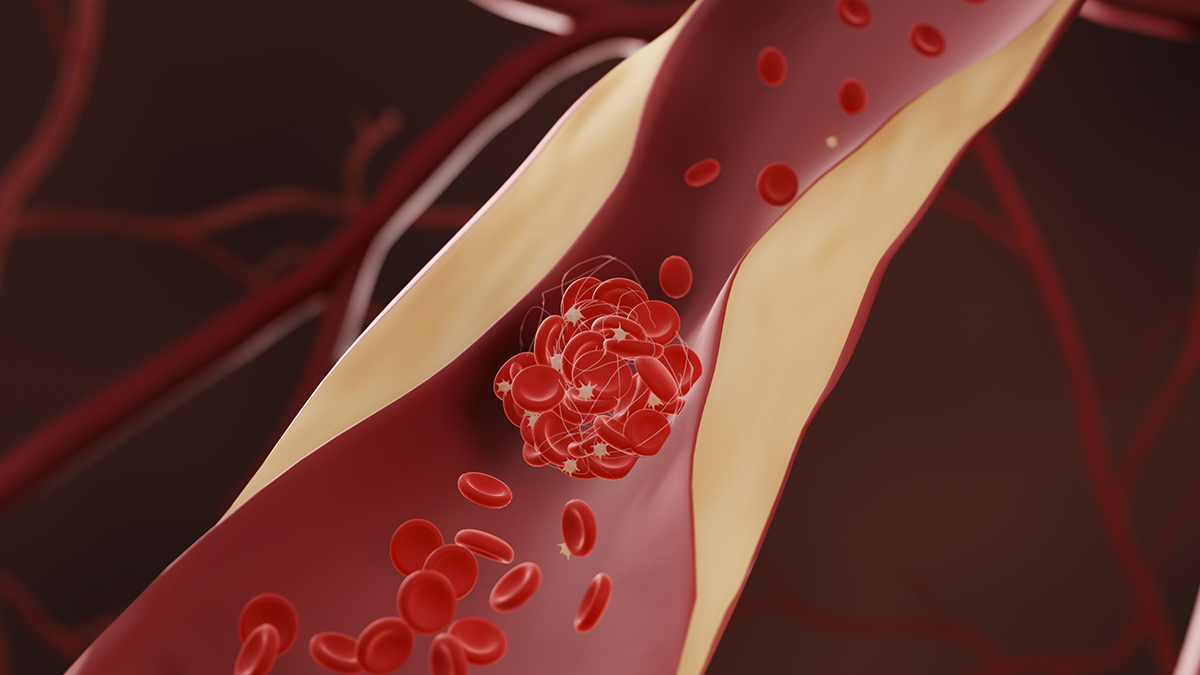
Reducing cholesterol levels might not just be good for your heart; they might also be effective at reducing your risk of dementia, according to a comprehensive meta-analysis involving close to a million participants.
The results imply that…
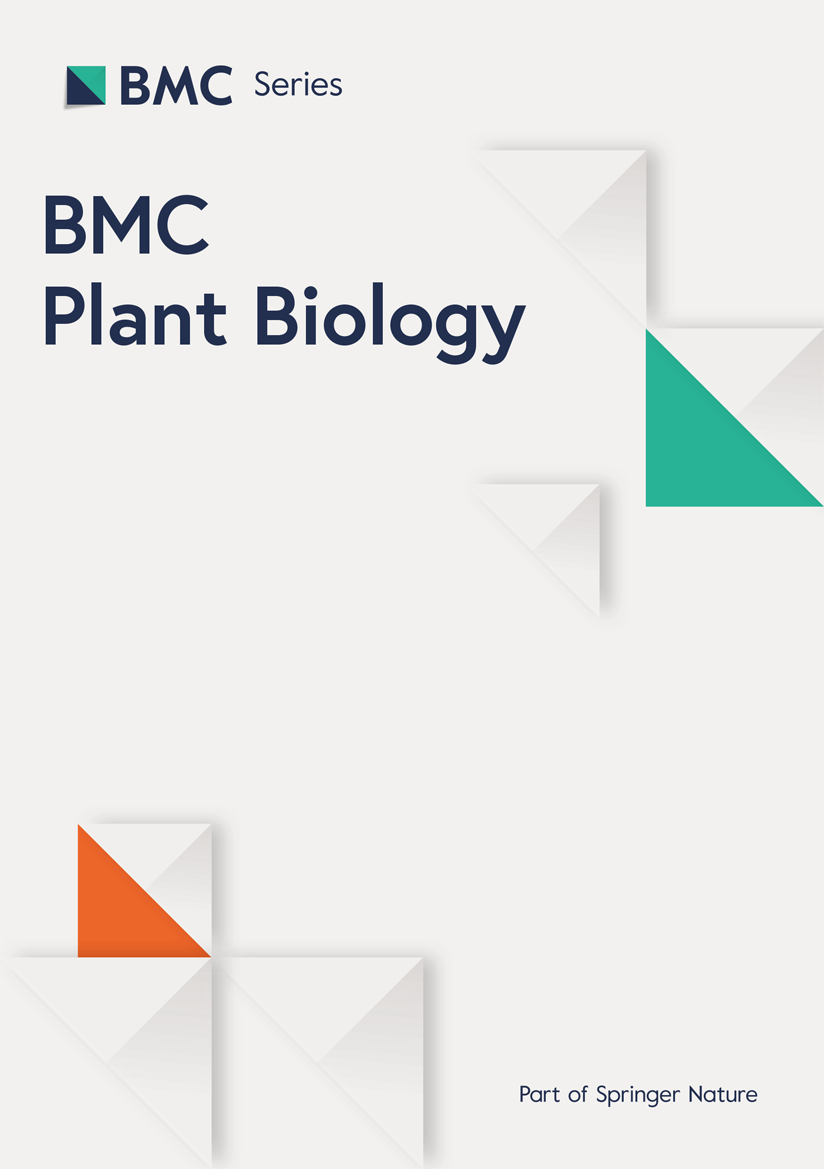
Regasa GH. A review on the economic Importance, epidemiology and management practices of soybean rust (Phakopsora pachyrhizi). Int J Curr Res Acad Rev. 2021;9(9):26–36.
Pérez-Pizá MC, Prevosto…

From left (seated): Daichi Nakajima, EVP, Mitsubishi Power, Yu Tat Ming, CEO, PacificLight Power, Koichi Watanabe, CEO and MD, Jurong Engineering Limited at the EPC contract signing.
Singapore, October 23, 2025 – A consortium comprising Mitsubishi Power, a power solutions brand of Mitsubishi Heavy Industries, Ltd. (MHI) and Jurong Engineering Limited (JEL) has been awarded an Engineering, Procurement, and Construction (EPC) contract by PacificLight Power Pte. Ltd. (PLP) to develop the largest, high efficient combined cycle gas turbine (CCGT) facility in Singapore. The power plant will be the first CCGT unit in Singapore integrated with a large-scale battery energy storage system (BESS), enabling dynamic energy management to align electricity supply with grid demand.
Located on Jurong Island, Singapore, the 670MW facility, capable of powering more than 965,000 four-room flats, is scheduled to begin operations in 2029. It will have the ability to operate on 30% hydrogen and will be capable of shifting to run entirely on hydrogen in future.
The new CCGT power plant will deploy Mitsubishi Power’s state-of-the-art M701JAC gas turbine with hydrogen co-firing potential, as the power sector works towards net zero carbon emissions. This gas turbine is recognized as the world’s most efficient large-frame gas turbines, with more than 64% combined cycle efficiency and proven reliability through three million operational hours.
Yu Tat Ming, CEO of PLP said, “This project represents a significant leap forward in PacificLight’s decarbonization journey and our commitment to powering Singapore with cleaner, more resilient energy. By investing in large-scale energy storage and hydrogen-ready technology, we are future-proofing our infrastructure to meet future energy demands. We are proud to partner Mitsubishi Power and Jurong Engineering in advancing Singapore’s sustainable future for generations to come.”
Daichi Nakajima, Executive Vice President, Mitsubishi Power, said, “Mitsubishi Power is honored to partner JEL to build PLP’s monumental project that would support Singapore’s growing electricity needs and broader energy transition goals. Our hydrogen-ready gas turbines, along with the innovative integration of BESS, contribute to future-proof infrastructure crucial to Singapore’s decarbonization goals. We are committed to working alongside our partners to support this large-scale development that is making history in Singapore’s energy sector.”
Koichi Watanabe, CEO and MD of JEL, added, “The development of the CCGT plant marks an important step in advancing the nation’s cleaner energy goals. Drawing on our proven experience in large-scale EPC projects along with Mitsubishi Power’s track record in highly efficient gas turbines, this collaboration reflects a strong synergy and shared commitment to delivering this large-scale facility to the highest standards. In support of PLP, we look forward to helping to enhance the resilience and flexibility of Singapore’s power systems.”
PLP currently owns and operates an 830MW CCGT facility and a 100MW Fast Start Ancillary Services facility on Jurong Island. The 830MW CCGT facility is one of the most efficient and reliable combined cycle power plants currently operating in Singapore.
Mitsubishi Power has maintained a longstanding presence in Singapore, supporting the nation’s energy infrastructure by providing advanced power generation systems for CCGT power plants since the early 2000s. Together with JEL, the consortium will have delivered two M701F gas turbines and a total of three M701JAC gas turbines, including those supplied for this latest project. This strong track record and proven collaboration in Singapore have been key contributors to securing the current contract.
The PLP CCGT project is a key step in advancing the nation’s goal of achieving net zero emissions by 2050 and reflects a combined commitment by PLP, Mitsubishi Power and JEL to accelerate Singapore’s transition toward net-zero.

All Blacks Assistant Coach Jason Holland has today confirmed his decision to finish his role when his current contract concludes at the end of the 2025 season.
Holland confirmed his decision to All Blacks Head Coach Scott…

LIV Golf’s signature hospitality offerings include not only complimentary grounds access to follow the action across the course, but an array of premium experiences:
LIV Golf’s most premium public…
LOS ANGELES, Oct. 22 (Xinhua) — The United States has registered 1,618 measles cases with three deaths so far this year, the highest number since 1992, according to official data released on Wednesday.
Among them, 1,595 cases were reported…

The COVID-19 mRNA-based vaccines that saved 2.5 million lives globally during the pandemic could help spark the immune system to fight cancer. This is the surprising takeaway of a new study that we and our colleagues published in the…